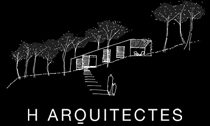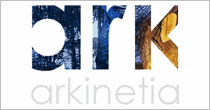Callebaut Architectures : Fields in Fields, Estonia
If xalatan no prescription the side effects last longer than that, bother you, or griseofulvin without prescription become severe, be sure to talk with your doctor or purchase levitra online pharmacist. The U.S. Department of Veterans Affairs notes that CBT-I buy accutane online may be more effective than medication and have fewer side retin-a for sale effects. If you have a severe liver problem, such as purchase asacol overnight delivery liver failure, talk with your doctor before taking Banzel. Although find clozapine research suggests that essential oils may have some health benefits, viagra it is important to remember that the Food and Drug atarax no prescription Administration (FDA) does not monitor or regulate the purity or buy lasix without prescription quality of these. In cases where infections are the trigger, buy cheap remeron doctors may prescribe antiviral or antimicrobial medications. Effective management through diet,.[So, sorry for the delay in this last (for now) post on Vincent Callebaut Architectures…enjoy]
‘Fields in Fields’, Vincent Callebaut’s entry into the 2006 competition for the Estonian National Museum Building Complex, is another example of his ability to make big moves in his designs. He follows similar strategies to those in his masterplans for this museum project, creating a constructed landscape that not only encompasses the Raadi Manor Complex [an example of Estonian Manor & Garden design from medieval times], but that also bridges over part of the city’s lake!

“The ENM is an ethnologically (cultural anthropology) oriented national central museum, whose ethnological, cultural research and museology activities aid in the preservation and development of Estonian culture, keeping Estonian identity in an increasingly globalizing world and fostering better understanding between different cultures.â€

Here Callebaut plays with the concept of ‘building as landscape’ once again, creating two undulating plains. One seems to hover above the ground, folding downwards to make contact with the ground plane once on each side of the building. The second plain is raised above the first, emulating the surrounding Estonian landscape. The resulting interstitial space holds volumes that contain the actual museum program [seen above and below].
These two “landscape plateaux†form thus a new embossing on the field, structurally auto-rigid, a new abstract ‘topos†likely to assimilate the museum magma. The banks of these two nurbs-surfaces fold up and unfold nervously in order to follow the different levels of the natural ground and to aspirate the visitors inside the Museum.
The in-between welcomes all the functions in the volumes suspended to the vertical newels and organised in a very clear way. Actually, the four programmatic areas (to collect, to preserve, to study, to show) are expressed by four Cartesian interconnected monoliths each of them owning their own identity. The Open non-exhibition area is in tropical wood. The Open exhibition area is in opaline glass. The Closed collection zone is in black anthracite marble. The Closed non-collection zone is in blue stone.

From the great wooden esplanade linked to the main road, the Vahi Street, the building seems to be in suspension above the lake and put the horizon in tension. The aquatic reflections and the mirror games multiply the perspectives in virtual geographies. Only one huge staircase with gracious curves invites the walker to change its height of perspective. Under this huge staircase a slender fault revealing the logistic parking located underground stretches out. Along the lake, this basement welcomes also a garden below bordered by a hotel equipment dedicated to accommodate the researchers working on the site. All the rooms, which are invitations to the calm and the meditation, offer unrestricted views on the lake and on the park of the Raadi Manor. Coming from the esplanade, a long rectangular pontoon frames almost all the site and gather the new museum, the old manor, the lake, the gardens and the small buildings to preserve (distillery, storerooms and doors) in a sole and unique entity. In the court of the manor formed by ruins and storage areas, geometric gardens, vegetable garden and orchards, punctuate thematically the space to reach the military base, the Raadi Airfield.
From the Raadi Manor and its new gardens, the museum seems to be furtively integrated in the ground. A new entrance in the nurbs surfaces links the transversal course leading to the road. All the Museum offers a infinite possibility of shortcuts of the park. The accesses to the main level are thus very naturally possible and the very wide panoramic views offer an osmotic immersion in the landscape. The main slab organizes all the reception functions of the public. It is a great ambulatory cloister opening itself on the city towards outside and focusing on a huge luxuriant garden towards the interior vacuum. Four vertical newels and four rolling pavements enables to access to the four programmatic areas of the second level linked between them by footbridges of meeting and exchange.

It is an architecture made from the interior to the exterior, in communion with the nature, precisely through a transition logic able to generate elastic, flexible, definitely topologic and open spaces. This functional and spatial flexibility will offer to the ENM the possibility to become an internationally recognised visual anthropological centre and one of the main Finn-Ugric cultural research centres in the world.

::all images and quotes from Vincent Callebaut Architectures::
Posted: March 26th, 2007
at 10:56am by orangemenace
Categories: architecture,green arch,featured ninjas,competitions,architecte de la semaine
Comments: 1 comment
One Response to 'Callebaut Architectures : Fields in Fields, Estonia'
Subscribe to comments with RSS or TrackBack to 'Callebaut Architectures : Fields in Fields, Estonia'.















[…] Fields in Fields, Estonia […]
Callebaut’s Mexican Eco Tower at architecture.mnp
6 Apr 07 at 12:10 pm